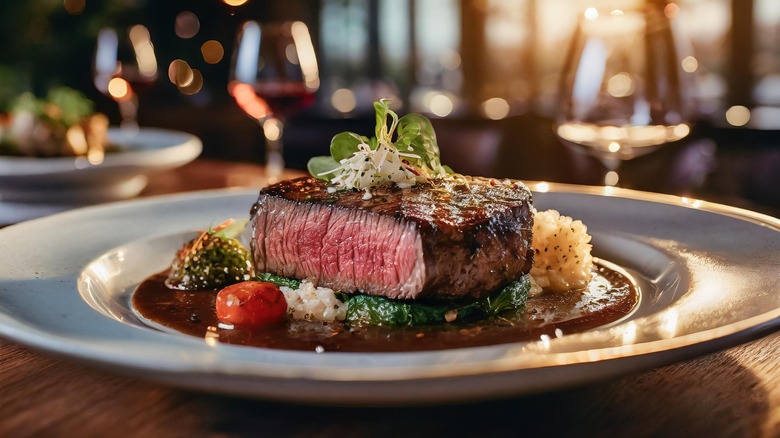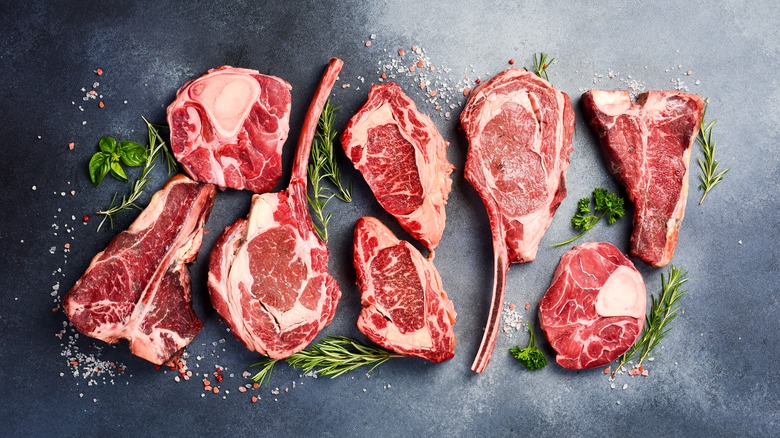What You Need To Know Before Ordering Your Cut At A Steakhouse
If you've got a special event to celebrate, or some important clients to impress, you're never going to go wrong by choosing a classic steakhouse. While it's not so hard to cook a good steak at home, at a steakhouse you'll get all the pomp and circumstance of table side service, a sommelier to help choose the perfect bottle of wine, and of course there are the famous steakhouse sides. For the uninitiated, however, we know that a steakhouse menu can be a little intimidating, so Daily Meal asked Executive Chef Daniel Ontiveros of Carversteak in Las Vegas what you need to know before ordering a cut of beef. The most important difference between the long list of steaks, he said, is the aging.
"For someone who has not been to a steakhouse, they should know the basic difference between dry aged (storing beef in a controlled environment for weeks or months to improve its flavor and texture), wet aged (vacuum-sealed and aged in the refrigerator to tenderize the meat and enhance its flavor) and non-aged," says Ontiveros. Non-aged steak is fresh meat cooked shortly after it has been cut and cleaned. Not only will these categories determine the price (dry aged is most expensive, and non-aged is the least), but they also have a major impact on the flavor.
Know the difference between the cuts themselves
Once you've decided what type of beef aging you'd prefer, the second most important choice at a steakhouse is the cut of meat itself. Chef Daniel Ontiveros says that it's a good idea to know at least a few basic steak cuts before you sit down to dinner, like filet mignon, striploin or New York strip, bone-in filet, and Kansas City or bone-in New York steaks. Each piece has its own particular flavors and textures, which, depending on their fat content, dictate how they are aged. Fattier cuts like ribeye, for instance, are better for dry aging while lean cuts like flat iron and filet mignon are better suited for wet aging.
If you're very new to the steakhouse experience, it's also nice to know which steaks have bones so that you're not surprised when a dramatic bone-in steak arrives at the table. While steakhouse chefs do have a lot of secrets up their sleeves, usually the menu will note the steaks that are served on the bone, though it never hurts to be prepared by reading up on every cut of steak you need to know before you head out to dinner. If you're really stumped, however, don't be afraid to ask your server for some pointers — they're trained to know everything about each steak on the menu so that they can help you find exactly the right cut for your first steakhouse dinner.

